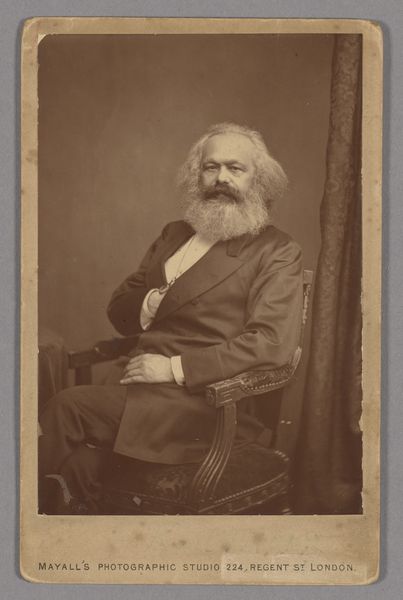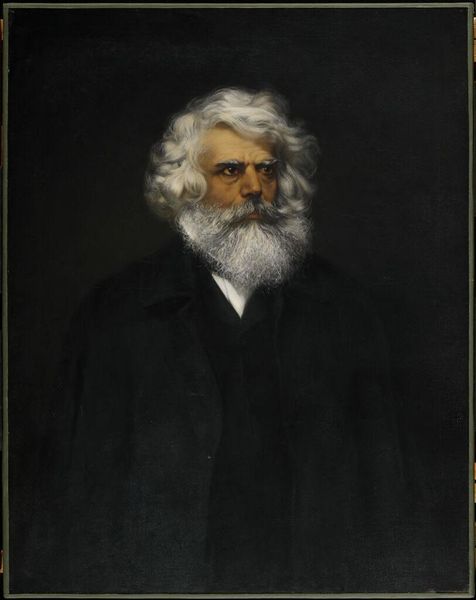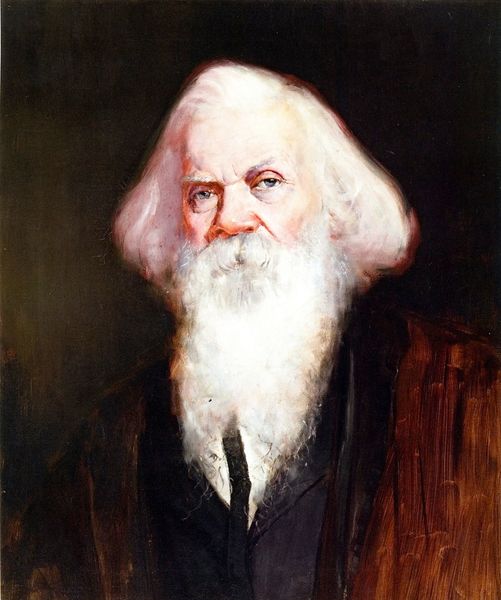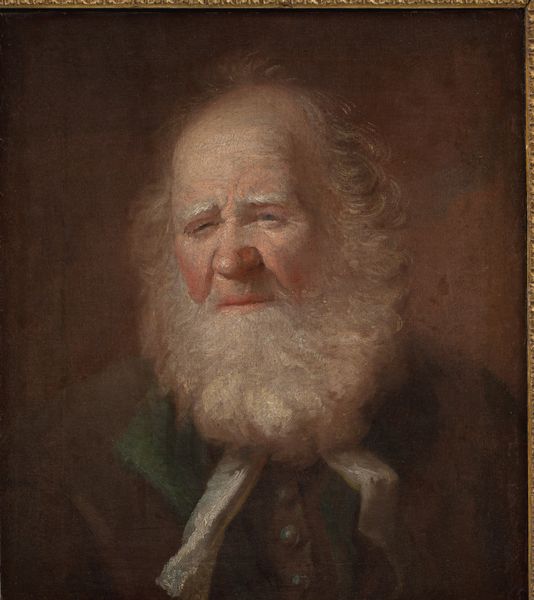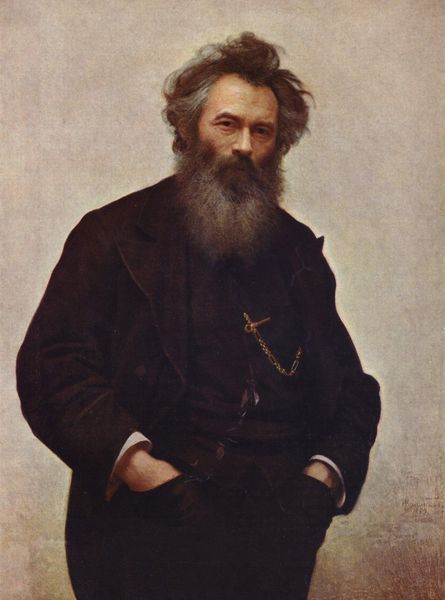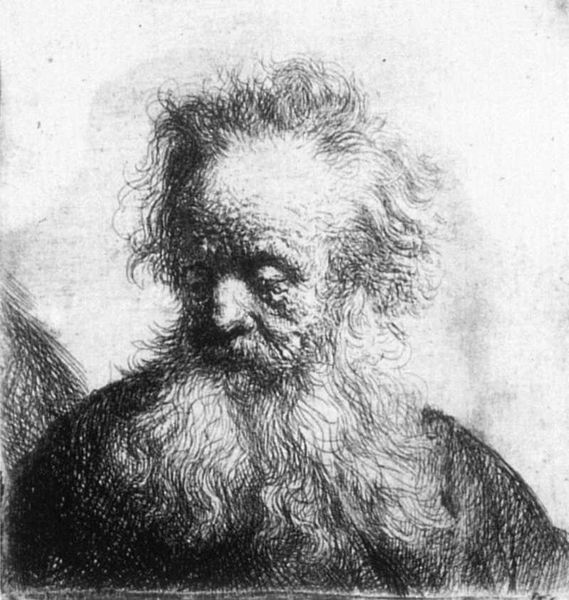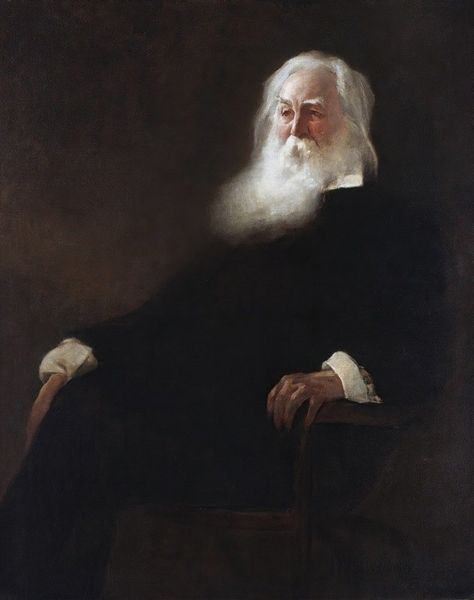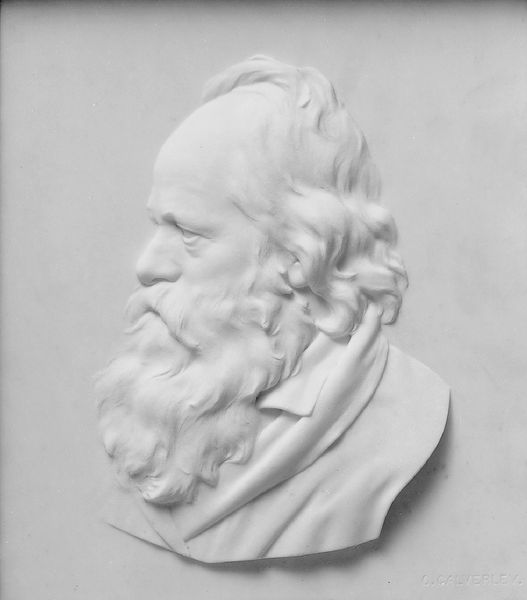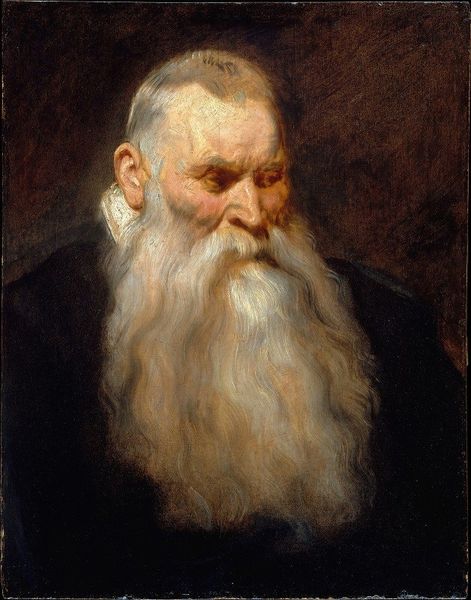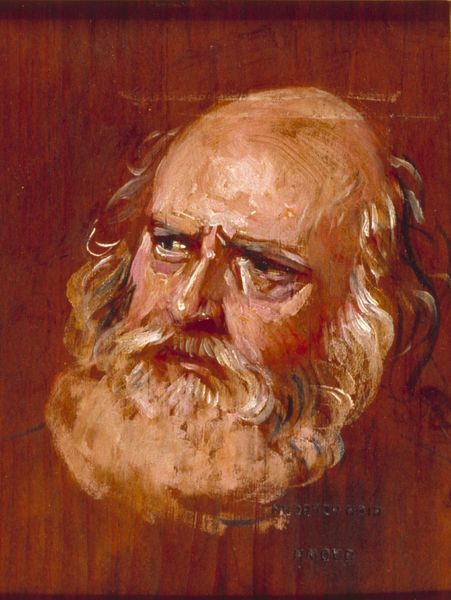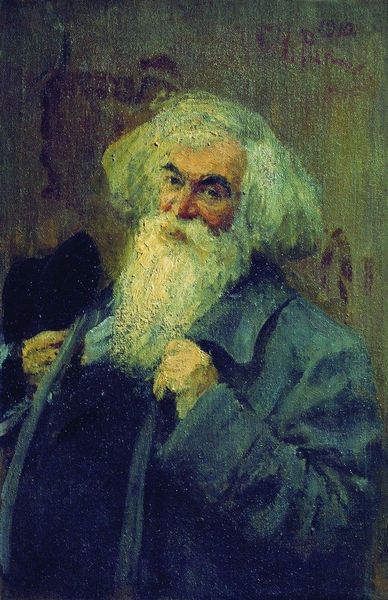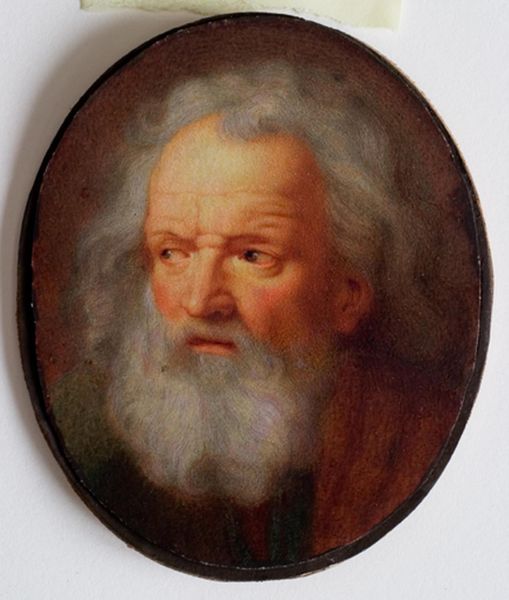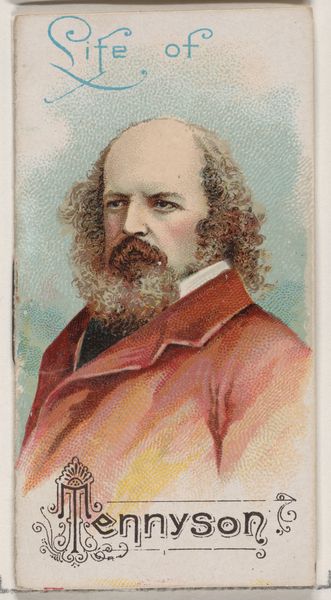
pastel
#
self-portrait
#
pastel
#
modernism
#
realism
Copyright: Public Domain: Artvee
Editor: This is John Collier’s pastel portrait of Karl Marx, created in 1977. The texture created with the pastel medium feels very soft, almost gentle, which contrasts with the typical image of Marx as this revolutionary firebrand. How do you interpret this particular depiction? Curator: Well, consider how artists depict powerful figures over time. There are familiar attributes, such as dress or pose, that come to represent specific cultural ideas linked to the portrayed. Here, the flowing beard becomes a symbol of wisdom and perhaps even patriarchal authority. The artist plays with that. What kind of associations does that trigger in your mind? Editor: It’s interesting. The beard is definitely prominent. It reminds me of images of Old Testament prophets, or even depictions of Zeus. But given Marx’s philosophy, those seem like loaded, almost ironic references. Curator: Precisely. Visual language is all about layers of meaning and subversion. What do you make of his gaze? Where does it seem directed? Editor: He’s looking slightly off to the side, not directly at the viewer, as if contemplating something beyond us, perhaps the future he envisioned? Or maybe it gives the feeling he’s sizing us up. Curator: That averted gaze adds another layer of complexity. It resists the immediate connection a direct gaze would invite, suggesting a certain aloofness or even distrust. A powerful image, layering visual references in unexpected ways, challenging us to consider the many faces of legacy. Editor: It's fascinating how a seemingly straightforward portrait can contain such rich layers of symbolic meaning. Curator: Absolutely, and remembering the cultural memory connected with this philosopher! It speaks volumes about the ongoing power of images to shape and reshape our understanding of history and its key players.
Comments
No comments
Be the first to comment and join the conversation on the ultimate creative platform.
